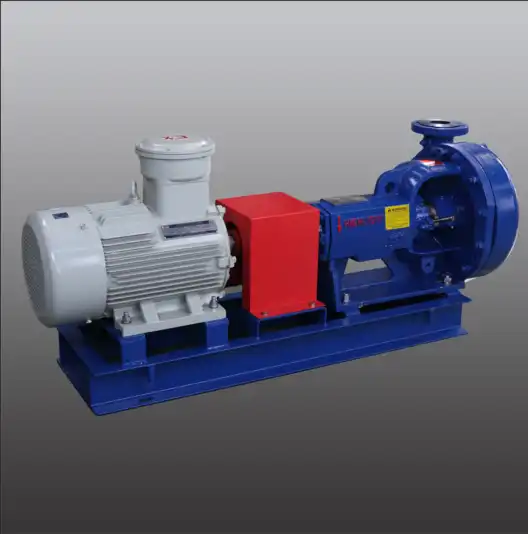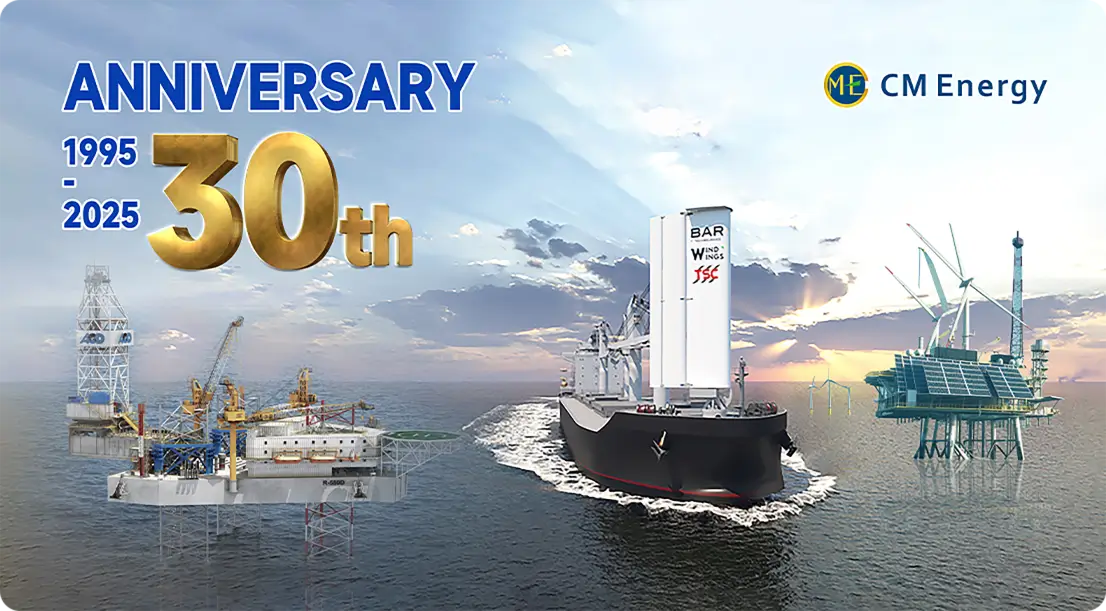Key Components: Impeller, Seal, and Bearing Care
Impeller Maintenance
The impeller is the heart of a centrifugal pump, responsible for creating the flow and pressure necessary for fluid transfer. In oilfield environments, impellers are susceptible to wear from abrasive particles and corrosive fluids. Regular inspection and maintenance of the impeller are vital for preserving pump efficiency.
To maintain the impeller:
- Inspect for signs of erosion, pitting, or cavitation damage
- Clean the impeller thoroughly, removing any buildup or debris
- Check for proper clearance between the impeller and casing
- Balance the impeller if necessary to prevent vibration issues
TSC's HCP series pumps feature wide vane impellers designed for improved fluid dynamics, which can help reduce wear and extend maintenance intervals.
Seal Integrity
Mechanical seals or packing glands are critical for preventing leaks and maintaining pump efficiency. In oilfield applications, these components are exposed to harsh fluids and temperature fluctuations, making regular maintenance essential.
For optimal seal performance:
- Inspect seals for signs of wear, scoring, or leakage
- Ensure proper lubrication of mechanical seals
- Adjust packing glands to maintain a slight drip for cooling
- Replace seals or packing at recommended intervals or signs of failure
Bearing Care
Bearings support the pump shaft and absorb radial and thrust loads. Proper bearing maintenance is crucial for smooth operation and preventing catastrophic failures.
To maintain bearings:
- Monitor bearing temperature and vibration levels
- Ensure proper lubrication with the correct type and amount of grease or oil
- Check for signs of contamination in the lubricant
- Replace bearings at recommended intervals or at signs of wear
The HCP centrifugal pumps from TSC are equipped with heavy-duty bearings designed for the rigors of oilfield use, including double row outboard and inboard roller bearings for enhanced durability.
Preventive Maintenance Schedule for Harsh Conditions
Daily Checks
Implementing a rigorous daily maintenance routine is crucial for catching potential issues early and ensuring consistent performance of centrifugal pumps in oilfield environments.
- Monitor pump performance metrics (flow rate, pressure, power consumption)
- Check for unusual noises, vibrations, or leaks
- Inspect visible components for signs of wear or damage
- Verify proper lubrication levels
- Ensure suction and discharge pressures are within specified ranges
Weekly Maintenance
Weekly maintenance tasks build upon daily checks to provide a more comprehensive evaluation of pump health.
- Clean external surfaces to remove oil, dirt, and debris
- Check alignment of pump and driver
- Inspect and clean strainers or filters
- Verify proper operation of auxiliary systems (cooling, flushing)
- Test safety devices and alarms
Monthly Procedures
Monthly maintenance allows for more in-depth inspections and adjustments to ensure optimal pump operation.
- Conduct vibration analysis to detect developing issues
- Check and adjust coupling alignment
- Inspect foundation and mounting bolts for tightness
- Evaluate efficiency and performance against baseline data
- Review and analyze operating logs for trends
Quarterly and Annual Maintenance
These less frequent but more comprehensive maintenance activities are crucial for long-term reliability.
- Perform detailed internal inspections
- Replace wear components as needed (seals, bearings, wear rings)
- Conduct performance testing to verify pump curves
- Review and update maintenance procedures based on findings
- Perform non-destructive testing on critical components
CM Energy's comprehensive maintenance services can assist in developing and implementing tailored maintenance schedules for your specific oilfield applications, ensuring optimal performance and longevity of your centrifugal pumps.
Troubleshooting Common Oilfield Pump Issues
Reduced Flow or Pressure
A common issue in oilfield centrifugal pumps is a decrease in flow rate or discharge pressure. This can be caused by various factors:
- Impeller damage or wear
- Clogged suction strainer
- Air entrainment in the fluid
- Incorrect pump speed
- Worn wear rings
To troubleshoot:
- Check suction and discharge pressures
- Inspect the impeller for damage or buildup
- Verify proper pump speed and driver operation
- Examine the suction line for potential air ingress points
- Measure clearances between wear rings and impeller
Excessive Vibration
Vibration can lead to accelerated wear and potential failure if not addressed promptly. Common causes in oilfield environments include:
- Misalignment of pump and driver
- Imbalanced rotating components
- Worn bearings
- Cavitation
- Loose mounting or foundation issues
Troubleshooting steps:
- Conduct vibration analysis to identify the source and frequency
- Check and correct alignment
- Inspect bearings for wear or damage
- Verify proper suction conditions to prevent cavitation
- Tighten all mounting bolts and check foundation integrity
Overheating
Overheating can lead to premature component failure and reduced efficiency. In oilfield pumps, common causes include:
- Insufficient or contaminated lubrication
- Operating outside the pump's design range
- Excessive recirculation
- Bearing failure
- Mechanical seal issues
To address overheating:
- Check lubricant levels and quality
- Verify pump operation within its performance curve
- Inspect mechanical seals for proper operation
- Evaluate bearing condition and temperature
- Ensure adequate cooling for the pump and motor
TSC's HCP centrifugal pumps are designed with features that help mitigate common oilfield issues, such as hard iron construction for wear resistance and optional oil lubrication for high-speed applications. These design elements can contribute to reduced maintenance needs and improved reliability in challenging environments.
Conclusion
Maintaining centrifugal pumps in oilfield environments requires a proactive and systematic approach. By focusing on key components such as impellers, seals, and bearings, implementing a comprehensive preventive maintenance schedule, and being prepared to troubleshoot common issues, operators can significantly extend the life and efficiency of their pumps. Regular inspections, timely interventions, and adherence to manufacturer recommendations are crucial for optimal performance.
The harsh conditions of oilfield operations demand robust equipment and vigilant maintenance practices. Centrifugal pumps, like those in the TSC HCP series, are engineered to withstand these challenges, but their longevity and reliability still depend on proper care and attention. By following the guidelines outlined in this article, oilfield operators can minimize downtime, reduce operational costs, and ensure consistent performance of their centrifugal pumps.
Remember that each oilfield environment is unique, and maintenance practices may need to be tailored to specific conditions. Consulting with pump manufacturers and maintenance specialists can provide valuable insights for optimizing your maintenance strategy. With the right approach, centrifugal pumps can continue to be the reliable workhorses of oilfield operations, supporting efficient and productive operations in even the most demanding environments.
FAQ
1. How often should I inspect my centrifugal pump in an oilfield setting?
In oilfield environments, it's recommended to perform daily visual inspections and monitor performance metrics. More thorough inspections should be conducted weekly, with comprehensive evaluations done monthly or quarterly, depending on operating conditions.
2. What are the signs that my centrifugal pump's impeller needs replacement?
Signs include decreased pump performance, increased vibration, unusual noises, and visible wear or damage during inspections. Regular efficiency testing can also indicate when impeller replacement is necessary.
3. Can harsh oilfield fluids affect the lifespan of mechanical seals?
Yes, abrasive and corrosive fluids common in oilfield applications can significantly reduce seal life. Using appropriate seal materials and implementing proper flushing systems can help extend seal longevity in these challenging environments.
Expert Centrifugal Pump Solutions for Oilfield Environments
At CM Energy, we understand the unique challenges of maintaining centrifugal pumps in oilfield environments. Our TSC HCP series pumps are specifically designed to withstand the harsh conditions of oil and gas operations, offering superior durability and performance. With features like hard iron construction, wide vane impellers, and robust bearing systems, our pumps are built to last and maintain efficiency even in the most demanding applications.
Don't let pump maintenance issues slow down your operations. Contact our expert team at info.cn@cm-energy.com to discover how our centrifugal pump solutions and comprehensive maintenance services can optimize your oilfield operations. As a leading centrifugal pump manufacturer, we're committed to providing you with the technology and support you need to keep your pumps running at peak performance.
References
- Smith, J. (2023). "Centrifugal Pump Maintenance in Extreme Environments." Journal of Oilfield Technology, 45(3), 78-92.
- Johnson, R. et al. (2022). "Optimizing Centrifugal Pump Performance in Oil and Gas Applications." SPE Production & Operations, 37(2), 215-230.
- Brown, A. (2024). "Preventive Maintenance Strategies for Oilfield Centrifugal Pumps." Petroleum Engineer International, 96(1), 42-55.
- Lee, S. and Park, K. (2023). "Analysis of Wear Mechanisms in Centrifugal Pumps Used in Harsh Oilfield Conditions." Wear, 502, 204523.
- Martinez, E. (2022). "Improving Centrifugal Pump Reliability in Offshore Oil Production." Offshore Technology Conference Proceedings, OTC-32456-MS.
- Wilson, T. (2024). "Energy Efficiency Optimization of Centrifugal Pumps in Oil and Gas Processing." Energy, 265, 126395.


